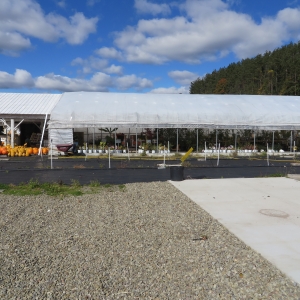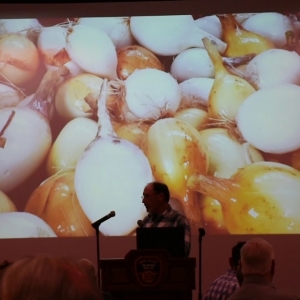Other Ag News:
WASHINGTON, March 18, 2025 – Today, U.S. Secretary of Agriculture Brooke Rollins celebrated National Agriculture Day, reinforcing the importance of American farmers, ranchers, and producers as outlined in President Donald J. Trump’s official proclamation marking the occasion.
Agriculture remains a cornerstone of life in the U.S. Delta Region consisting of Arkansas, Mississippi, and Louisiana. Each state showcases unique agricultural strengths due to their varied ecosystems, terrains, and climates.
Arkansas is the national leader in rice production, with over 1.43 million acres harvested in 2024. Beyond rice, Arkansas’s largest value of sales is poultry and eggs with a total of $7.68 billion in 2022, according to the 2022 Census of Agriculture.
WASHINGTON, March 18, 2025 – U.S. Secretary of Agriculture Brooke Rollins, on National Agriculture Day, announced that the U.S. Department of Agriculture (USDA) is issuing up to $10 billion directly to agricultural producers through the Emergency Commodity Assistance Program (ECAP) for the 2024 crop year. Administered by USDA’s Farm Service Agency (FSA), ECAP will help agricultural producers mitigate the impacts of increased input costs and falling commodity prices.
WASHINGTON, March 18, 2025 – U.S. Secretary of Agriculture Brooke Rollins released the following message in recognition of National Agriculture Day to honor the farmers, ranchers, and producers who feed, fuel, and clothe the world:
WASHINGTON, March 17, 2025 – U.S. Secretary of Agriculture Brooke Rollins today announced new actions to reduce burdens on the U.S. pork and poultry industries, allowing for greater efficiency while maintaining food safety standards. The directive instructs the Food Safety and Inspection Service (FSIS) to eliminate outdated administrative requirements that have slowed production and added unnecessary costs for American producers.
WASHINGTON, March 17, 2025 – U.S. Secretary of Agriculture Brooke Rollins announced today that USDA will be delivering any assistance it can for communities and agricultural producers affected by the weekend storms that cut a path of devastation through the South and Midwest.
These storms have sparked tornadoes, dust storms and wildfires that have engulfed hundreds of square miles, left hundreds of thousands of homes without power and taken dozens of lives.
For Immediate Release
Contact: Laura Zaks
National Sustainable Agriculture Coalition
press@sustainableagriculture.net
Comment: NSAC Responds to Government Funding DealWashington, DC, March 15, 2025 – Today, the National Sustainable Agriculture Coalition (NSAC) reacted following Senate approval of the Full-Year Continuing Appropriations and Extensions Act, 2025 (H.R. 1968) on a vote of 54-46. Earlier this week, the House of Representatives approved the bill – which will fund the government through September 30, 2025 – on a vote of 217-213. The following statement is attributed to Mike Lavender, NSAC Policy Director.
“Today’s government funding deal locks in and deepens cuts that will have a direct line to farmer livelihoods and the economic well-being of their communities. The continuing resolution escalates cuts from the Consolidated Appropriations Act of 2024 by slashing USDA’s conservation and research programs, undermining the real progress needed to bolster farmer productivity and resilience in both the near and long term. As appropriators begin work toward FY2026 funding, Congress must stand with farmers and communities nationwide – not only against devastating cuts, but for progress.”
###
The National Sustainable Agriculture Coalition is a grassroots alliance that advocates for federal policy reform supporting the long-term social, economic, and environmental sustainability of agriculture, natural resources, and rural communities. Learn more and get involved at: https://sustainableagriculture.net
The post Comment: NSAC Responds to Government Funding Deal appeared first on National Sustainable Agriculture Coalition.
WASHINGTON, Mar. 14, 2025 – U.S. Secretary of Agriculture Brooke Rollins today applauded President Trump and Republican leadership in Congress for securing critical victories for American farmers, ranchers, and rural communities through the passage of a continuing resolution that keeps essential funding in place.
While the US Department of Agriculture (USDA) has not confirmed the number of employees that have already been laid off or their plans for a forthcoming “reduction in force”, staffing chaos has reigned at the agency for the past several weeks. The firing of nearly 6,000 probationary employees was ruled illegal and extensive terminations are being reported across agencies including the Agricultural Research Service (ARS), Farm Service Agency (FSA), and Natural Resource Conservation Service (NRCS), among others. USDA even mistakenly fired key staff responding to the current bird flu outbreak.
USDA staff in all agencies provide essential services to farmers, ranchers, and rural communities. They administer and manage a wide range of programs and technical assistance that keep farms working and the agricultural economy functioning. In many cases, they are hard working, valued members of the rural communities they serve all across the country. This post examines what is at stake if USDA staffing cuts continue.
Farmers, Communities Lose When Staff Are CutAfter waiting eight months for his NRCS job to start, Josh Hardin was finally settling into his role as a district conservationist, recruiting new participants, keeping contracts on schedule, and guiding farmers through conservation programs, when he was suddenly let go in the mass firing of probationary employees. In his region of Arkansas, farmers had gone years without a local NRCS office, and when he was hired, they were relieved to have someone who knew the land, the programs, and their needs. “Finally, somebody who knows what’s going on and knows how to help us,” one told him. But just as he was getting his footing, he was fired, leaving colleagues scrambling and farmers without the staff to support them. This time of year is particularly busy at NRCS offices as they prepare for spring deadlines to rank new applications and assess current contracts. Without adequate staffing, contract work has fallen behind, and farmers who had just started building trusting relationships with NRCS are now left without guidance.
“One office cannot handle eight counties. Farmers and landowners cannot drive four counties over to sign a paper or have a meeting, they need to go back to their work,” he said, emphasizing how staff losses break vital local connections. Fortunately, Hardin is one of the many recently fired USDA staffers who hope to soon return to work after the Merit Systems Protection Board (MSPB) determined that their firings were illegal.
Stories like Josh’s are being replicated around the country as staffing cuts take effect. Agripulse reports that at least eight USDA offices in Indiana, six in Kansas, five in Oklahoma, four in Missouri, and three in Minnesota have no NRCS staff following the first wave of layoffs. Farmers in all of these states and counties are now guaranteed to experience delayed conservation planning services, overwhelmed staff, and a sense that the systems they rely on are unraveling. NRCS staff are essential for delivering technical assistance and helping farmers and ranchers implement conservation practices that improve their environmental and economic outcomes. They guide producers through popular and over-subscribed conservation programs like the Conservation Stewardship Program (CSP) and the Environmental Quality Incentives Program (EQIP). Cuts to NRCS staff undermine the delivery of these wildly popular programs.
NSAC member Renewing the Countryside (RTC), which supports farmers and rural communities in the Upper Midwest, says they are also already feeling the impacts of USDA staffing cuts. RTC has previously held events at USDA service centers as a way to “let producers get to know where the service centers are, who to talk to in which office within the service center, and help get the USDA faces familiar so that producers are comfortable when they need the resources.” Facilitating these visits has proven an effective way to connect historically underserved farmers to USDA. When they reached out to schedule a next group visit, however, RTC was told that due to limited staff capacity they would be unable to hold the meeting at the local USDA office. The senior state official encouraged RTC’s farmers to schedule one-on-one visits, but that can be intimidating for producers who are unfamiliar with the USDA.
Staffing Cuts Cause Long-Term Research LossOne of the agencies hit hard by the first round of layoffs has been USDA’s Agricultural Research Service (ARS). NSAC member the Organic Farming Research Foundation (OFRF) reports that between 10-50% of the workforce at some ARS sites has been terminated. The firing of these scientists throws vital agricultural research into immediate disarray as the scientists who run the projects are unable to staff and support the research. These cuts have meant the immediate end of research with long-term implications for agriculture, like research done by Cornell PhD student Alex Lando who studies the potential for Entomophthoralean fungi which could provide a safer alternative to chemical pesticides. The loss of ARS staff and associated research will reverberate for decades and undermines much needed innovation in agriculture and forestry.
Probationary Employees: The First to Be Laid OffEmployees in their probationary period, typically those with less than one year of service or two years in an excepted service appointment, have been particularly vulnerable to massive federal layoffs. On January 20, 2025, the Office of Personnel Management (OPM) issued a memo to all federal agencies that led to the firing of thousands of probationary federal employees. The number of probationary employees at the USDA and the extent of their firings is unclear as the agency has not publicly reported their staffing cuts. While the firing of nearly 6,000 USDA probationary employees was determined to be illegal, it is possible that the scope of firings has been and will be much wider. Using public data from OPM’s Fedscope federal workforce data, we estimate the number of probationary employees across the USDA is more than double that number, meaning thousands more critical staff may be vulnerable to cuts.
According to the most recent FedScope data available, in September 2024 there were 12,231 employees, or 12.42% of the USDA’s workforce, that had been in their position for less than one year. These employees were most likely still on probationary status and the number is likely higher considering that probationary periods may extend for up to two years for some positions.
Among USDA divisions, the National Institute of Food and Agriculture (NIFA) had the highest percentage of employees with less than one year in their position (17.42%), likely due to recent efforts to rebuild staffing levels following its relocation to Kansas City. The Forest Service (17.27%) and Agricultural Research Service (15.47%) also had high shares of employees with less than one year in their positions, suggesting that any widespread layoffs could disproportionately impact these agencies.
Divisions with the highest percentage of employees with less than one year of service include (full table in appendix):
Geographic Breakdown: Where Layoffs Could Hit HardestLooking at employment patterns by state, USDA employees in the western US appear to have the highest likelihood of being affected. California had the largest number of USDA employees with less than one year in their positions (1,733), followed by Oregon (1,042), Montana (776), Idaho (734), and Washington (622). In percentage terms, Idaho (21.1%), Montana (20.8%), and Oregon (20.79%) had some of the highest shares of newer employees. These states could see significant staffing reductions if layoffs target probationary employees.
!function(){"use strict";window.addEventListener("message",(function(a){if(void 0!==a.data["datawrapper-height"]){var e=document.querySelectorAll("iframe");for(var t in a.data["datawrapper-height"])for(var r,i=0;r=e[i];i++)if(r.contentWindow===a.source){var d=a.data["datawrapper-height"][t]+"px";r.style.height=d}}}))}(); Telework, Return-to-Office Orders, and Additional Workforce ReductionsIn addition to layoffs of probationary employees, on January 20 the White House issued an Executive Order requiring departments terminate remote and telework arrangements for federal employees. This will likely lead to further staff reductions if employees are unable or unwilling to work in-office or to relocate if their duty station is not local.
According to the FedScope data from September 2024, 42.74% of USDA employees (42,086 individuals) were eligible for telework. While not all telework-eligible employees will leave their jobs if required to return to in-person work, even a 10% attrition rate among this group could result in more than 4,000 additional departures.
Divisions with the highest percentage of telework-eligible employees include (full table in appendix):
If USDA continues pushing for a full return-to-office policy, the loss of telework-flexible jobs could further exacerbate staffing shortages.
Implications for Farmers and Rural CommunitiesSignificant workforce reductions at USDA will have far-reaching implications for farmers, ranchers, and rural communities that depend on agency services. Agencies like NRCS and FSA play critical roles in delivering conservation assistance, loans, and disaster assistance programs. A depleted workforce in these divisions could lead to delays in program delivery, reduced technical assistance, and weakened implementation of conservation and farm resilience efforts.
For example, NRCS has already lost a substantial portion of its 1,299 employees with less than one year in their positions, impacting the agency’s ability to process Conservation Stewardship Program (CSP) and Environmental Quality Incentives Program (EQIP) contracts—two programs that are hugely popular and over-subscribed. Already, only about one quarter of CSP applications are funded each year. Staffing cuts endanger the recruitment, ranking, and support for these hugely popular programs, and will guarantee frustrating and necessary delays for producers. Further, NRCS, and FSA staff located in county service centers are hardworking, respected members of rural communities. Indiscriminately firing them only harms the social and economic fabric of small towns across the country.
Restoring USDA’s WorkforceWithout confirmed numbers from USDA, we can only estimate the scope of current layoffs—but reports suggest thousands of employees. The impacts of the first wave of USDA layoffs are already being felt by farmers and rural communities. In an NSAC briefing on March 6, Adam Chappell, a farmer from Cotton Plant, Arkansas, shared his dismay about staff losses: “The NRCS in Arkansas, we depend on it. It has saved our farm a couple of times because it’s allowed us to implement programs and conservation that have allowed us to cut inputs like herbicides and fertilizers and things. And without them, I wouldn’t be here fighting the fight now. And we were already short staffed in Arkansas.”
Plans for even more widespread staff cuts would be devastating and would undermine the ability of farmers to access the support they need, especially as tariffs threaten an even more difficult few years ahead.
The administration’s indiscriminate staffing cuts have already had significant consequences, leaving farmers and rural communities without critical support. The USDA must immediately stop these reckless and indiscriminate firings and take urgent steps to rehire essential staff to restore its capacity to deliver vital programs and services across farm country.
Photo credit: USDAAppendix: USDA Staff
The post USDA Staffing Cuts Hurt Farmers and Rural Communities appeared first on National Sustainable Agriculture Coalition.
Recent Executive Orders have led to the freezing of billions of dollars of already committed grant money, including funds for the Partnerships for Climate-Smart Commodities (PCSC), an innovative program to support public-private partnerships to develop markets for climate-smart agricultural commodities.
Through PCSC, the US Department of Agriculture (USDA) has entered into agreements with 135 partner organizations ranging from large agribusiness corporations to farmer cooperatives, committing to more than $3 billion in federal funding matched by more than $1 billion in private funding. These agreements in turn provide vital support to American farmers, ranchers, and foresters who produce a wide range of crops, working with them to implement conservation practices and expanding market opportunities to help meet the increased consumer demand for climate-smart products.
Freezing funds for these agreements breaks commitments to the partners who have already invested in the projects. It also affects the farmers who contracted with these partners and are now waiting for reimbursement for work that is already underway. With billions in committed funds left in limbo, USDA’s inaction places organizations and farmers into precarious financial situations and risks their ongoing stability.
What are Partnerships for Climate-Smart Commodities?Partnerships for Climate-Smart Commodities (PCSC) is a program that provides grants to partners to implement extensive projects that develop markets for agricultural commodities produced with practices that reduce greenhouse gas emissions and/or sequester carbon. Partners received funding for projects that provide incentives for producers to adopt conservation practices on their lands, measure the climate benefits of those practices, and expand markets for the resulting commodities.
PCSC grants were funded in two pools in 2022; together, these two funding pools invested $3.03 billion across 135 projects, representing a broad range of partners, commodities, and geographic coverage, and years of ongoing effort.
This post offers an updated examination of the PCSC grants, who benefits from them, and the importance of the USDA honoring its existing commitments. Information on PCSC agreements is available on the program dashboard and a June 2024 report offers an overview of the program’s scope.
Diverse Partners in Climate-Smart AgriculturePCSC agreements are with a broad range of partners representing a cross-section of American agriculture and food supply chains. The primary partners on PCSC agreements include: 43 nonprofit organizations, 39 for-profit businesses, 34 colleges and universities, 7 commodity groups, 7 state, local, and tribal governments, and 5 cooperatives. Commodity group partners include both checkoff programs that promote and research specific commodities (American Lamb Board, Iowa Soybean Association, National Pork Board) and industry advocacy groups (International Fresh Produce Association, National Sorghum Producers Association, USA Rice Federation, US Cotton Trust Protocol).
The broad scope of partners shows that a wide swath of producers and crop types are benefiting from the investments made through this program. In particular, PCSC included an experimental round of funding designed for smaller organizations to ensure that grants reached a wider range of agricultural stakeholders.
USDA reports that more than 14,000 farms are enrolled in PCSC projects and more than 3.2 million acres of working agricultural land is enrolled. As the funding freeze continues to jeopardize the sustainability of these projects, thousands of more farms are waiting in the pipeline for enrollment, which is paused as partners seek clarity from USDA.
One fourth-generation farmer in North Carolina enrolled 90% of his acreage into a PCSC project offered in his region because it allowed him more flexibility than the USDA’s traditional conservation programming, including the ability to enroll a larger majority of his acres and a higher incentive rate for growing wheat cover crops. The project allowed him to focus on the soil health of his farm, reduce input costs, and have additional financial assurance during a time of high inflation and multiple hurricane disasters. With the project funding frozen, and having already done the work of planting cover crops in the fall, the farmer is facing uncertainty for the upcoming season where he planned to plant 500 acres of grain but is now unsure if it is financially viable. “We signed up for them, we did the work, we expect to be reimbursed, and we want to do the work throughout the continuation of the contract, which is supposed to end in 2028.”
In addition to the primary partners on PCSC agreements, USDA reports that agreements include: 276 nonprofit and commodity groups, 257 for-profit businesses, 98 colleges and universities, and 77 state, local, and tribal governments. These partners provide services such as direct technical assistance to growers implementing practices, market research, and other vital assistance that producers enrolling in projects need to succeed. This wide range of partners depend on USDA honoring its commitments to deliver efficient, cost-effective support to producers on the ground in the counties where they operate. By breaking agreements with these partner organizations, USDA will force a capacity reduction that would greatly degrade technical assistance services available to farmers at the local level, compounding the impact from cuts to USDA’s own staff in the field and undermining the current system of technical support for our farmers.
Examining the scope of funding for PCSC partners, USDA has directed the largest share of PCSC funding to private businesses, but also significant amounts to nonprofits, colleges and universities, and commodity groups, as seen in Figure 1.
Figure 1: PCSC Funding by Primary Partner Organization TypeAmong the 34 college and university primary partners, 10 were Historically Black College and University (HBCU) land grant universities, 1 was a non-land grant HBCU, 9 were land grant universities, 2 were Hispanic Serving Institutions, 1 was private university, and 11 were other public universities.
Figure 2: PCSC College and University Primary Partner Type Climate-Smart Commodities: A Wide Range of Agricultural ProductsPCSC agreements cover a variety of crops and a wide range of production practices. Notably, three-quarters of PCSC projects involve more than one commodity, and 29% of projects include at least five commodities. USDA generally considers any annual crops as agricultural commodities. The inclusion of a wide range of commodities, especially specialty crops, ensures that climate-smart agriculture benefits diverse farming operations, from large-scale row crop farms to smaller fruit and vegetable producers. Of the 135 projects, 102 of them worked with multiple commodities, and 39 of them covered at least 5 different commodities.
Figure 3: Primary and Secondary Commodities Under PCSC Agreements Well-Established Conservation PracticesPCSC agreements help farmers to adopt long-standing and popular classic conservation practices. The most common practices in PCSC agreements include nutrient management, cover cropping, reduced tillage, and other conservation practices, which are also among the most widely adopted practices in programs like the Conservation Stewardship Program (CSP).
Table 1: Ten Most Common Practices Available in PCSC Agreements Nationwide Reach: Every State and Territory BenefitsThe impact of PCSC extends across all 50 states, tribal communities, and US territories. Every state has at least five PCSC agreements that include its region, and 34 agreements additionally cover tribal communities. PCSC agreements also cover US territories, including Puerto Rico, the Virgin Islands, Guam, the Mariana Islands, and Washington, DC. The map below shows the number of PCSC agreements that cover a state.
Figure 4: PCSC Projects by State !function(){"use strict";window.addEventListener("message",(function(a){if(void 0!==a.data["datawrapper-height"]){var e=document.querySelectorAll("iframe");for(var t in a.data["datawrapper-height"])for(var r,i=0;r=e[i];i++)if(r.contentWindow===a.source){var d=a.data["datawrapper-height"][t]+"px";r.style.height=d}}}))}();A significant portion of PCSC agreements have a multi-state impact, with 73% of PCSC projects covering multiple states and 44% covering 5 or more states. This wide reach ensures that climate-smart agricultural practices are adopted at scale, driving meaningful climate benefits while supporting farmers, ranchers, and food supply chains nationwide.
Figure 5: Number of States Covered by PCSC Agreements Conclusion: Honoring Commitments to FarmersThe Partnerships for Climate-Smart Commodities supports farmers, ranchers, and foresters installing classic conservation practices that make their operations more resilient, efficient, and profitable. Like farm bill conservation programs, producers and partner organizations participate in PCSC projects voluntarily, choosing practices that work best for their farms.
With over $1 billion in private sector funding committed alongside more than $3 billion in federal grants, these projects represent a new experiment in the kind of public/private partnerships that have enjoyed bipartisan support from agricultural policy makers for years. Freezing these funds places billions of dollars in limbo, disrupting carefully planned projects and breaking commitments to those who have already invested in these initiatives. At this moment, farmers have already planted crops and made purchases for the growing season based on anticipated funding that is now in jeopardy. To help them avoid economic hardship, partners are incurring costs with still no clarity from USDA on if they will be reimbursed, putting their organizations and the farmers they serve into financial precariousness. Already, as the funding freeze continues, farm groups are dropping out or considering it as they cannot pay staff nor the farmers they were working with in these agreements.
PCSC projects are not just climate projects – they also support farmers in taking on practices that make their operations more resilient, expand their markets to help increase their revenue, and work towards building the infrastructure for their long-term viability. Farmers, universities, businesses, and nonprofits have made significant commitments based on these agreements, and failing to follow through is failing our farms.
The post Farmers Lose When Climate-Smart Partnerships are Frozen appeared first on National Sustainable Agriculture Coalition.
Pages
Signup for the Ag Newsletter
Get the freshest farm news, events and updates from in and around Cattaraugus County, NY at least once a month! Go signup!
Other ways to stay connected:
Get Involved in Farming
Resources for Starting a Farm in Cattaraugus County
Profile of Cattaraugus County soils
Agriculture Career Exploration
Questions about farming? Find out Who to Call











